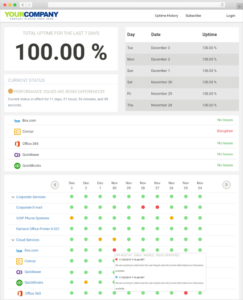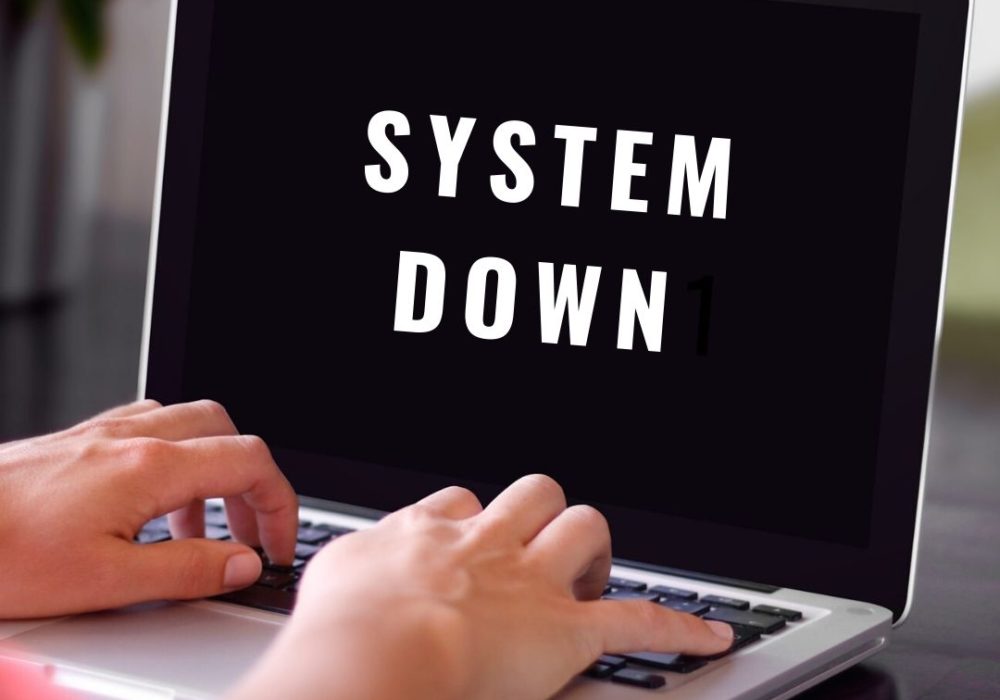Today’s news is filled with stories about the failures of IT and the impact to companies, consumers and brands. Because modern business relies heavily on IT, system outages and IT downtime have become a standard part of ‘doing business.’ 2019 saw several big outage stories. We’ve shared our Top 5 picks and discuss the importance of implementing an IT status page to help you successfully manage your organization’s IT downtime.
Because there are so many differences in how businesses operate, downtime can be cost between $140,000 and $540,000 per hour.
Gartner
Salesforce’s outage in May of 2019 enabled Salesforce users inside companies to see all of their company’s data, with or without permission. This issue was compounded by the fact that Salesforce (in an effort to offer a quick fix) turned off permissions to its Marketing Cloud. This change caused sales agents and marketers around the world to lose access to their customer information. Salesforce took three days to fully restore access to the Marketing Cloud to all its 150,000+ customers. Without access to a CRM database marketer’s cannot send out emails, implement automated touch-points and capture/score new leads from company websites. No CRM also access means sales teams are left working manually from call lists and their recollection of proposals and sales contracts. In other words, sales and marketing teams that have standardized on the Salesforce platform came to a screeching halt during this system failure. The number of companies affected, the severity of the issue and the amount of time it took for the problem to be resolved, is what landed Salesforce on our Top 5 IT Outages of 2019 list.
According to Reuters, Slack now has 10 million daily active users on its platform. On June 28 of 2019, Slack users started noticing significant issues with performance that affected Slack’s most popular services–login, messaging, posting files, calls and other app integration. During the outage, Slack registered a 10-25% job failure rate. This error rate may not seem significant to some, but when you consider Slack’s 10 million daily user base, it is quite notable. For this reason, Slack makes our Top 5 IT Outages of 2019 list.
Google’s Gmail Meltdown
Most of us are familiar with Gmail because we have a free gmail email account. But, did you know that more than 5 million businesses have standardized on Google’s GSuite, which includes Gmail? Most of these businesses are smaller in nature, which makes the platform even more critical as smaller players have less of a buffer than their larger counterparts when it comes to closing sales, meeting customers’ needs and running operations.
In March of 2019 Google experienced a global outage that affected its Gmail and Google Drive services. For 4.5 hours Gmail users complained that they couldn’t send emails. Google Drive users reported that certain files would not open and that the Google Cloud was operating in a diminished capacity (very slow). Due to the widespread global impact and the number of hours the services were down, Google ranks in our Top 5 IT Outages of 2019.
Microsoft Office
Microsoft Office is prolific with 1.2 billion people (across 140 countries and 107 languages) using the platform. On January 24, 2019, the SaaS giant reported that customers in Europe couldn’t access their Office 365 Exchange online mailboxes. Every time a user tried to log into their email, the connection would time out, leaving them with no access.
Less than a week later, Microsoft again had an Office 365 problem that affected more services and a wider customer base. It turned out that one of Microsoft’s providers had introduced a software defect into its technology stack, which affected connectivity to Microsoft Office customers’ cloud resources. The sheer number of people affected by both of these incidents makes Microsoft Office one of our Top 5 IT Outages of 2019.
Communicating During Downtime
The common denominator among these Top 5 2019 IT Outages (with the exception of Snapchat) is the impact they had on business. It is conceivable that during these outages: Salesforce users in the sales and marketing departments of 150,000+ organizations couldn’t access their customer data, couldn’t run marketing campaigns and couldn’t capture sales leads effectively; Slack users couldn’t collaborate on new products and services which translated to a loss in development time; and employee productivity slowed and customer service suffered because files had to be shared via email versus Google Drive.
The other common thread among these companies is that they are all big industry players who have invested in communications tools to keep their stakeholders abreast of IT issues. But, what about the trickle down effect? What is the best method for their business customers to keep their stakeholders up-to-date. These businesses have to put in place communication channels to make their internal and external stakeholders aware of how outages affect their supply chain, operations, sales, marketing and customer service. According to Jonathan Hassell of CIO Magazine in “4 Ways CIOs Can Respond to a Service Outage,” communication is a critical ingredient to successfully mitigate an IT outage. In Jonathan’s words, “Communication can’t be an afterthought. It must be a high priority — second only to resolving the outage. Don’t make a bad situation worse by creating an information vacuum.”
Most companies focus on communicating externally to customers and the press regarding outages, but what about their other important stakeholders — their employees? Employees are the backbone of business as they support all client-facing functions like sales, marketing, service delivery, customer service and so on. When planning your IT downtime game plan, you should consider an IT Status Page to communicate with your employees and other internal stakeholders
Acorporate status page dramatically reduces your downtime costs by keeping employees informed and productive. The average cost of downtime for mid- to large-size companies is approximately $5,600 per minute.
StatusCast
By keeping internal resources up-to-date and providing them the information they need to do their jobs effectively, you ensure more stable and productive business operations while your IT team works to fix the underlying technology problem.

Sample IT Status Page
Learn More
https://www.crn.com/slide-shows/cloud/the-10-biggest-cloud-outages-of-2019-so-far-/2
https://data-economy.com/outages-downtime-system-failures-2019s-it-meltdowns/






